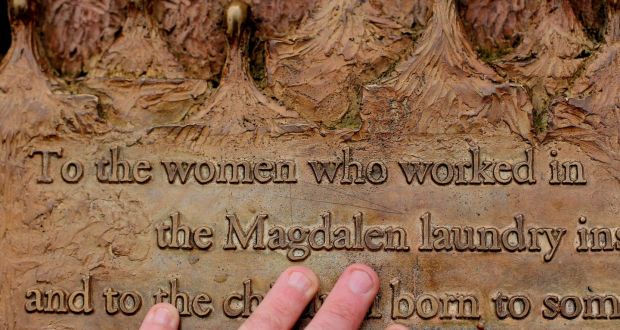The Life-long Prisoners of State-funded, Church-run Institutions
By Sinead Pembroke
On hearing the reports in the media about the discovery of a mass grave at the site of the once mother and baby home in Tuam, it nearly feels as though we are discovering abuses perpetrated by the Catholic Church in Ireland, in State-funded institutions for the very first time. Yet, this isn’t the first time, and as the daughter of a survivor of a Christian Brother institution, it feels like we’re back there again, when these abuses started to emerge in the media for the first time. There have been numerous inquiries into institutions that were State-funded and run by Catholic congregations, and the type of revelations we have been hearing recently about mother and baby homes were already being told by survivors of these institutions, yet were largely ignored. Why is this information only coming to the forefront now? And why wasn’t this investigated properly before, along with the other institutions? Reluctance This comes down to the great reluctance of governments (both Fianna Fail and Fine Gael) and the various public sector departments involved, in establishing these inquiries and redress schemes, in the first place. Usually they were established after years of campaigning from survivors, survivor groups and individuals. For example, the Commission to Inquire into Child Abuse (CICA) was only established after Mary Raftery’s documentary series for RTE called States of Fear. The Magdalene Redress scheme was only set up after Justice for Magdalenes (JFM) went to the UN Committee against Torture (CAT) to make a case of State involvement with the Magdalene Laundries. Consequently, investigations into religious-run institutional abuse have become so piecemeal. The truth is, as many writers and commentators before me have argued, industrial and reformatory schools, Magdalene laundries, orphanages, special needs schools, and mother and baby homes are all interlinked and were the State’s response to welfare in Ireland for most of the 20th century. In 2013, I worked on the Irish Research Council-funded project to compile an oral and archival history of the Magdalene institutions, where more than 90 interviews with survivors, key informants and relatives were conducted. What became apparent from this collection of oral histories is that many of the women were in two or more of these State-funded institutions. Moved Mary (pseudonym) was born in St Pat’s mother and baby home on the Navan Road. She was subsequently moved to St Philomena’s Convent in Stillorgan and spent eight years there, before she was subsequently moved to St Mary’s Industrial School in Sandymount. Mary was released on her 16th birthday, and she went to live with her mother, before being returned to St Philomena’s a year later by her mother. Subsequently, she began to date a man that the nuns didn’t like. One day, Mary found a policeman sitting in the parlour of the convent, and he escorted her to the Sisters of Our Lady of Charity Magdalene Laundry (commonly known as Gloucester Street), in Dublin. Mary tried to run away, but was caught and subsequently moved to the Good Shepherd Magdalene Laundry in Limerick where she spent nearly three years. By the time Mary was 21, she had spent most of her life in five institutions that were funded by the State and run by numerous Catholic religious orders. This type of life trajectory is common for many Magdalene laundry and industrial school survivors. If you were born into a mother and baby home and subsequently ended up in an industrial school, chances are you wouldn’t have any family support networks in the outside world. So, after your release on your 16th birthday, if you were female and you found yourself pregnant outside of marriage, it often meant that your only support network was the nuns that were in charge of you in the industrial school. It would be at this juncture that you would be sent to a mother and baby home, where the institutional process would repeat itself again. Consequently, by investigating these institutions separately, we are not getting the bigger picture, which is just how interconnected each were and how easy it was to become a life-long prisoner of the complex system of institutions, funded by the State and managed by the Catholic Church. Any future response from this Government (or the next), needs to acknowledge and deal with this, or else we will be faced with more inquiries.
|
.
Any original material on these pages is copyright © BishopAccountability.org 2004. Reproduce freely with attribution.
